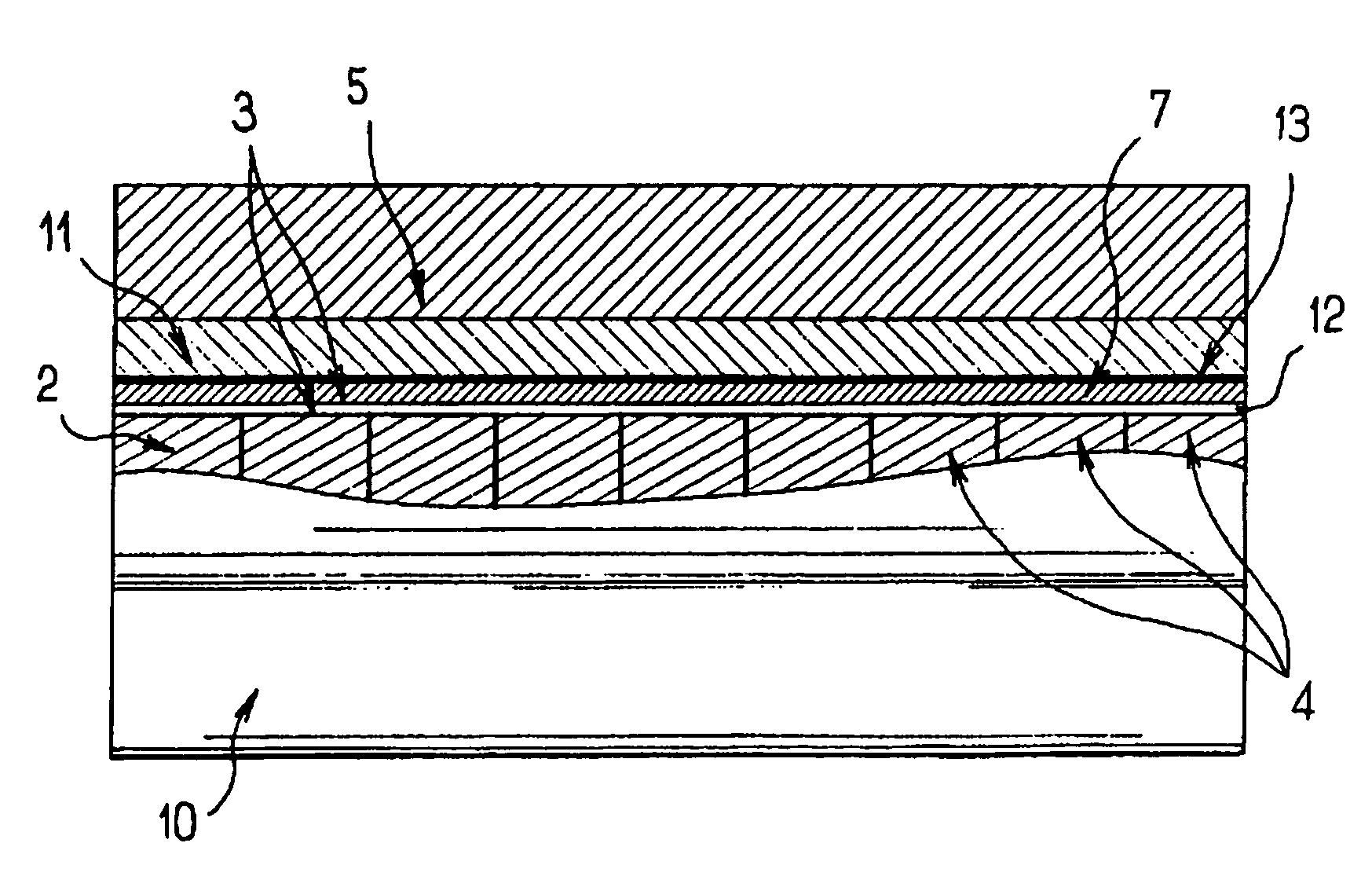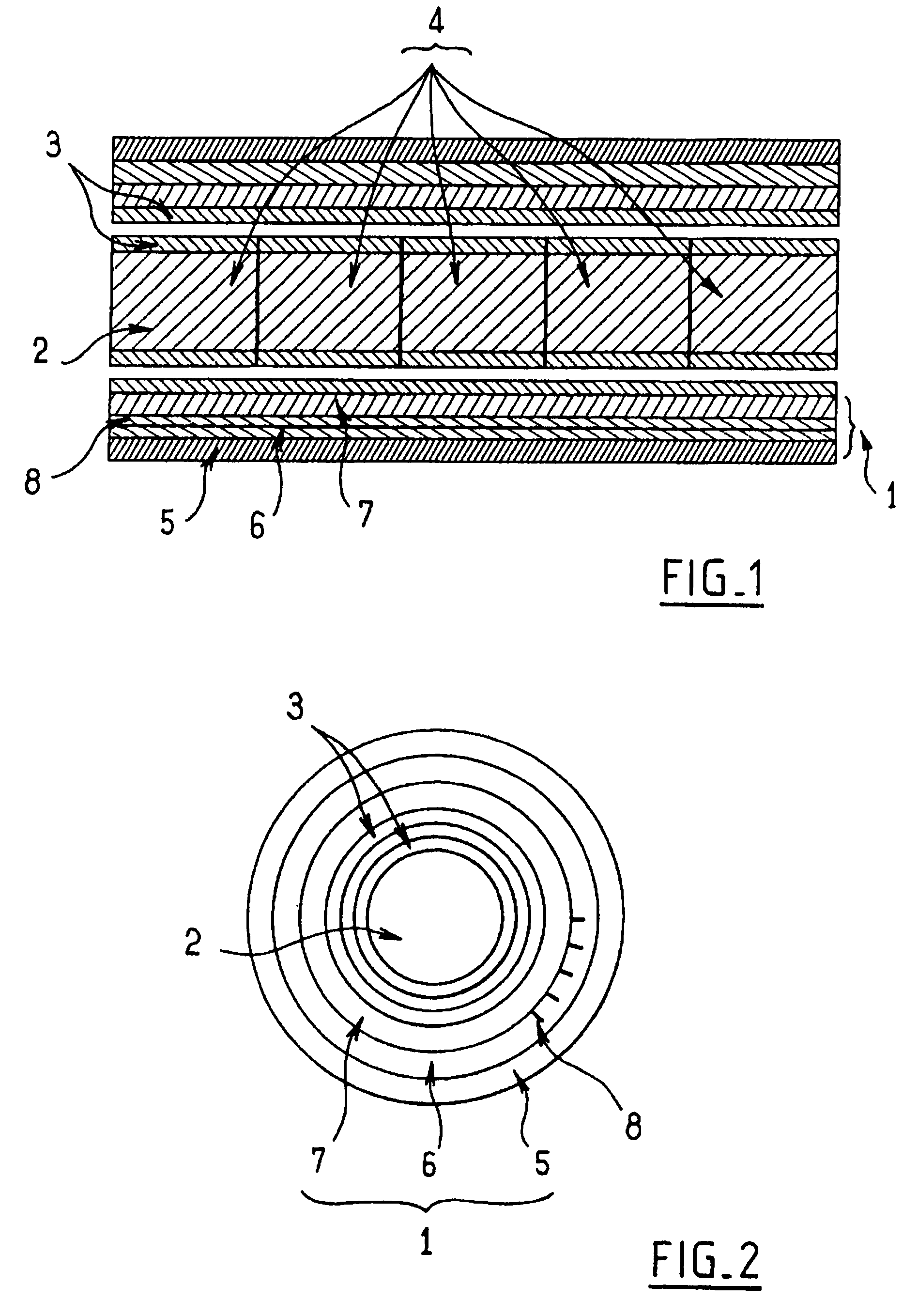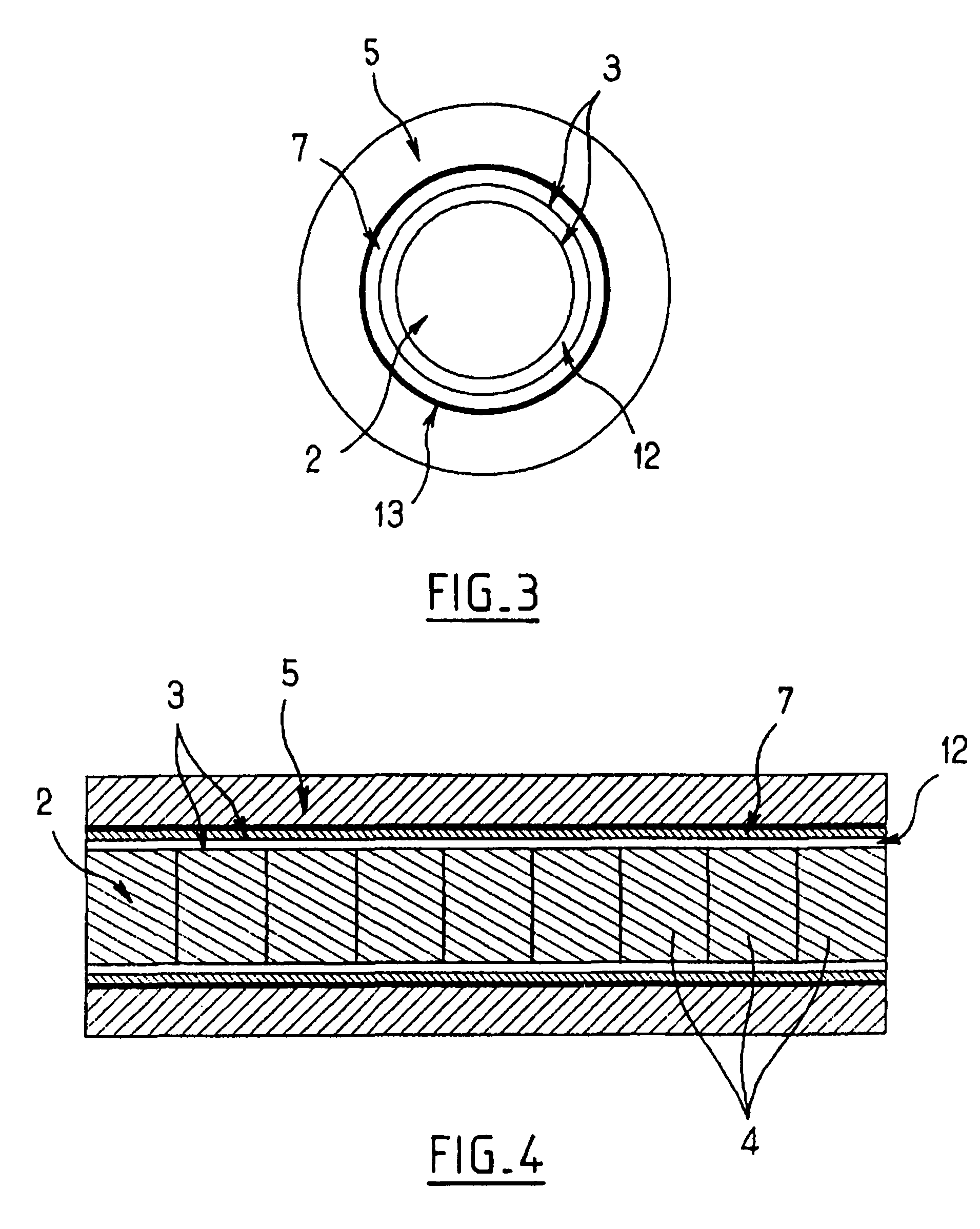Materials of the cylinders of active-piston actuators
a technology of active pistons and actuators, applied in the direction of brake actuators, generators/motors, mechanical devices, etc., can solve the problems of difficult design, actuators have drawbacks, and the challenge of determining the relative thickness of the different thicknesses is larg
- Summary
- Abstract
- Description
- Claims
- Application Information
AI Technical Summary
Benefits of technology
Problems solved by technology
Method used
Image
Examples
second embodiment
[0171]In this second embodiment, cylinder 5 has one or more expansion slots 11. These slots 11 are radial and extend from generating lines of the inner cylinder 7. Each slot 11 extends in radial and longitudinal directions, in the low thickness parts of cylinder 5 and / or preferably in the outgrowths 10. The longitudinal extension takes place preferably over the length of the cylinder.
[0172]The principle of operation of this second embodiment is similar to that of the first embodiment described previously. This second embodiment will be preferred in the case where the outer cylinder 5 is constructed in a material which has small elastic deformations. The slots 11 will therefore increase the ability to elongate cylinder 5.
[0173]It should be noted however that this second embodiment will be preferred only in the event of problems with the elongation of cylinder 5 since the slots 11 reduce the stiffness K of the inner cylinder 7-outer cylinder 5 system.
first embodiment
[0174]During the operation of the actuator or the rise in temperature, the outer cylinder 5, with a positive thermal expansion coefficient, will expand. At the same time as it tends to expand radially in order to compensate for the contraction of cylinder 7, as in the first embodiment, it expands circumferentially and tightens on the expansion slot 11, which has the effect of limiting its radial expansion.
[0175]The third embodiment, shown in FIGS. 8 and 9, has the same structure as the first embodiment of FIGS. 3 and 4, and a similar numbering of the components reflects this similarity.
[0176]The great difference is that the outer cylinder 5′ is in a material with a negative thermal expansion coefficient, and that the inner cylinder 7′ has a positive thermal expansion coefficient or one that is close to zero (less than 2 ppm / K in absolute value, for example).
[0177]However, the materials of the cylinder that have a negative expansion coefficient are the same as those of the first embo...
third embodiment
[0195]These variants are, for example, the presence of support and stiffness resources on the form of external outgrowths on the outer cylinder 5′. The presence of expansion slots in the inner cylinder 7′ or retractions in cylinder 5′, as well as the dimensioning of their depths, are used to resolve the problems of insufficient elongation, as would be presented in FIGS. 8 and 9.
[0196]The term cylinder, used in all of the aforementioned developments must be interpreted in the broad sense. In general, it refers to any form defined by a set of parallel generating lines bearing onto a given closed surface.
[0197]The actuators which have just been described are advantageously used to equip brake calipers, and more particularly the brake calipers of aircraft or motor vehicles, clutch systems, or the actuators of control surfaces.
PUM
 Login to View More
Login to View More Abstract
Description
Claims
Application Information
 Login to View More
Login to View More - R&D
- Intellectual Property
- Life Sciences
- Materials
- Tech Scout
- Unparalleled Data Quality
- Higher Quality Content
- 60% Fewer Hallucinations
Browse by: Latest US Patents, China's latest patents, Technical Efficacy Thesaurus, Application Domain, Technology Topic, Popular Technical Reports.
© 2025 PatSnap. All rights reserved.Legal|Privacy policy|Modern Slavery Act Transparency Statement|Sitemap|About US| Contact US: help@patsnap.com



